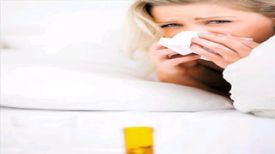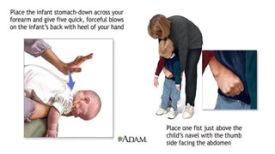
Shoulder periarthritis is a common disease characterized by shoulder pain and limited joint movement, often occurring in middle-aged and elderly people around the age of 50, hence the name "fifty shoulders". The occurrence of shoulder periarthritis is often related to factors such as chronic strain, trauma, or exposure to cold in the shoulder joint. Although shoulder periarthritis is not considered a critical illness, if it is not treated promptly and effectively, it is likely to worsen the condition, affect the mobility of the shoulder joint, and thus affect the patient's quality of life.
In traditional Chinese medicine, shoulder periarthritis is referred to as "fifty shoulders", "leaking shoulder wind", "frozen shoulder", etc., and belongs to the scope of "bi syndrome" in traditional Chinese medicine. Traditional Chinese medicine believes that the etiology and pathogenesis of shoulder periarthritis are: old age and weak physical condition, insufficient qi and blood, loss of nourishment for tendons, invasion of wind, cold, and dampness pathogens into the body, and obstruction of qi and blood in the shoulder muscles and veins. Therefore, the treatment is suitable for dispelling wind, dispersing cold, promoting blood circulation, and relieving pain. Recently, I received and cured a typical case that had not been cured for a long time in the outpatient department. I would like to review the entire treatment process and hope to share with you the traditional Chinese medicine treatment ideas and methods for this disease.Medical cases
Liu, female, 57 years old, first diagnosed on November 15, 2020. The patient was diagnosed as periarthritis of the shoulder in a top three western hospital of the city due to pain and limited activity of the left shoulder joint for more than 3 months. He was given Xiaohuoluo Pill, Monoherb, Fenbid, Ibuprofen and other Chinese and western medicines alternately, and acupuncture and moxibustion, hot compress, red light irradiation, plaster application for half a year, but no results were achieved. The pain in the left shoulder joint is still severe, especially when encountering wind and cold. Upon examination, it was found that the extension and lifting of the left upper limb were restricted, and there was significant tenderness in the acromion and anterior part of the shoulder. The patient has a thin and weak physique, and reports poor cold resistance. Heat leads to physical relaxation. The tongue is light, the coating is thin and white, and the pulse is heavy and weak.
Comes with auxiliary examination: Shoulder joint MRI shows: left shoulder joint osteophyte; Degeneration and fluid accumulation of the left shoulder acromioclavicular joint; Slight fluid accumulation in the tendon sheath of the long head of the left shoulder joint and biceps brachii muscle; Consider degeneration and injury of the left supraspinatus tendon.
Syndrome differentiation: Shoulder Bi Disease (Qi Deficiency, Cold, Coagulation and Stasis Syndrome)
Treatment method: tonifying qi and blood, dispelling cold and unblocking collaterals
Prescription: Huangqi Guizhi Wuwu Tang with modifications. 30 grams of Astragalus membranaceus, 15 grams of Angelica sinensis, 30 grams of Paeonia lactiflora, 15 grams of Cinnamomum cassia, 15 grams of Turmeric, 10 grams of Qianghuo, 10 grams of Streptomyces sinensis, 10 grams of Safflower, 10 grams of Weilingxian, and 10 grams of Myrrh, decocted in water, one dose per day, for a total of 5 doses. The third decoction involves dipping a towel in the medicinal solution and applying heat to the shoulder joint.
Second diagnosis: After taking 7 doses of medication, there is a significant reduction in shoulder joint pain and a feeling of warmth. After exercising, it is easier than before, and the remaining symptoms are mild. The original formula of Astragalus membranaceus and Paeonia lactiflora was reduced to 20 grams, while Guizhi and Turmeric were reduced to 12 grams.
Three diagnosis: on the basis of the original Chinese medicine treatment, it is treated with acupuncture and moxibustion and massage once every other day for five times in total. After taking 10 doses again, all symptoms disappeared and left shoulder joint activity tended to be normal.
Believe it or not, many people may wonder, can traditional Chinese medicine treat shoulder periarthritis? In fact, traditional Chinese medicine treatment focuses on syndrome differentiation. Diseases such as shoulder periarthritis are more common in middle-aged and elderly people after the age of 50, and these patients may often have a common characteristic of qi and blood deficiency. Especially after menopause, women often have insufficient qi and blood, making it difficult to nourish their limbs, resulting in lukewarm limbs and cold limbs. The symptoms of this patient are characterized by weakness of qi and blood, and the presence of cold pathogenic factors and blood stasis in the shoulder joint. This is like the Yellow River in winter, where due to the decrease in water flow and cold weather, it is easy for the river to freeze and seal up. Therefore, in treatment, it is necessary to first ensure sufficient Qi and blood, and restore Yang Qi. Therefore, the Huangqi Guizhi Wu Wu Wu Tang, which is used to supplement qi and blood, promote yang circulation, and promote obstruction, is modified from the "Jin Kui Yao Lue".
"The sixth chapter of the" Synopsis of the Golden Chamber: Treatment of Blood Bi Deficiency and Labor Disease Meridian Syndrome "states:" The question is: Where does blood Bi disease come from? The teacher said: "Fu Zunrong is weak in bones and skin, and often due to fatigue and sweating, he often shakes when lying down, and is accompanied by a gentle breeze." Huangqi in the formula is sweet and warm in nature, and can tonify qi and elevate yang. "; Angelica sinensis is sweet, fragrant, and warm, and can nourish blood, promote blood circulation, and relieve pain; White peony has a bitter and sour taste, which can nourish blood and relieve pain slowly; Guizhi is sweet, fragrant, and warm. It can warm the meridians, dispel cold, and relieve pain. At the same time, it also has the function of diverting meridians, allowing Qi and blood to reach the shoulders and back directly; Turmeric is fragrant and warm, and can promote blood circulation, smooth menstruation, and relieve pain; Qianghuo works hard and warms up, and its effects can dispel cold, unblock obstruction, and relieve pain; Stretching tendon grass is known for its ability to warm, dispel wind, and clear collaterals; Safflower is warm and can promote blood circulation, smooth menstruation, and relieve pain; Weilingxian is spicy, salty, and warm, which can dispel wind, dampness, unblock meridians, and relieve pain; Myrrh is bitter and pungent, and can promote blood circulation and relieve pain. Various medicines can be used interchangeably to achieve the effects of dispelling wind and dispelling cold, warming meridians and unblocking collaterals, and promoting blood circulation and relieving pain.
When the patient's qi and blood recover, the yang is sufficient, and the hands and feet gradually feel hot. At this time, cooperate with acupuncture and moxibustion and massage to move their meridians, the blood stasis will be solved, and the pain of periarthritis of shoulder will be solved. Therefore, when we meet such patients in clinical practice, we might as well try Chinese medicine to treat their qi and blood, and then cooperate with acupuncture and moxibustion, massage, cupping, plaster application and other treatments. I believe you will get unexpected results, which should be the charm of Chinese medicine treatment.
The content of the article is for clinical reference only. Non professionals in traditional Chinese medicine are not allowed to try medication.


